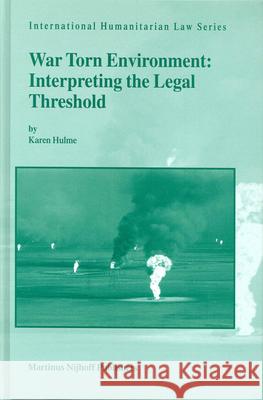War Torn Environment: Interpreting the Legal Threshold » książka
War Torn Environment: Interpreting the Legal Threshold
ISBN-13: 9789004138483 / Angielski / Twarda / 2004 / 340 str.
In the recent past the horrors of war have been demonstrated all too vividly. Who would have believed that after Nuremberg there would be any further need for war crimes tribunals, or for the creation of an international criminal court? But, whilst people in conflict countries suffer the mental and physical scars from military bombardment, they also suffer the silent legacy of environmental pollution. The world functions as one large ecosystem: the contamination of one element inevitably feeding into another. Pollution in peacetime has been greatly reduced, but what is the wartime cost to the environment?
Wartime weaponry and tactics are strictly controlled by the principles of humanitarian law, but international law can be a slow creature. Are our militaries using weapons today that violate the current laws of armed conflict? Or need new controls be drafted to deal with the environmental, and inevitably human, consequences of modern warfare? The book seeks to analyse the issues surrounding the protection of the environment in times of armed conflict, and to pose questions as to its adequacy and efficacy. But the focus is not simply upon the interpretation of the legal provisions in isolation; instead, the analysis establishes a benchmark standard of environmental harm against which the adequacy and efficacy of the legal provisions can be measured. At the centre of the analysis are a number of case studies tackling the most modern weapons and tactics, including the legality of depleted uranium weapons and cluster bombs, the validity of striking chemical weapons facilities and oil installations, and the responsibility for explosive and non-explosive war debris.











